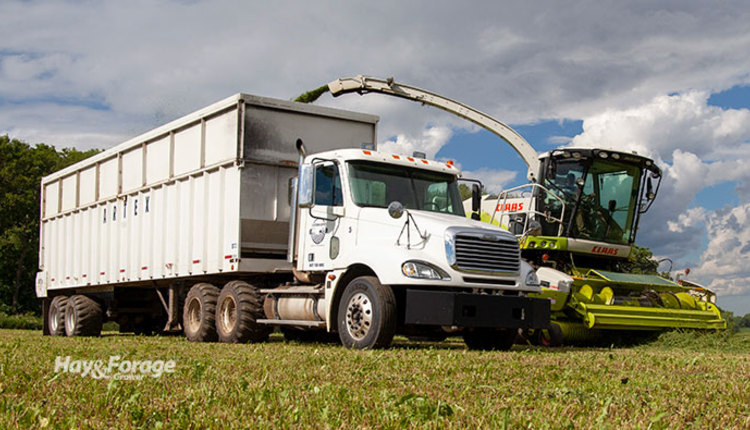Pay attention to tire pressure |
| By Amber Friedrichsen, Associate Editor |
|
|
 High diesel prices and weather-related delays threaten to turn planting season into a stressful situation. Take away some of the tension and improve fuel efficiency by only inflating tractor tires to the lowest recommended pressure. Michael Staton, soybean educator with Michigan State University Extension, notes radial tires on tractors have different inflation ranges for fieldwork versus road travel. The former implies slower speeds than the latter, thus requiring lower pressure. The benefits of adjusting tire pressure were realized in a field demonstration at Michigan State University’s Ag Expo. Two identical tractors with different tire pressures were hitched to a third tractor with a cable and pulley system and towed through a field. By the end of the trial, there was a clear distinction between the two. “The front tractor with properly inflated tires consistently performed better than the trailing tractor with slightly over-inflated tires,” Staton says. “The tractor with the properly inflated tires consumed less fuel and performed field operations in less time.” Measure and make changes Some farmers always run tires on low pressure, while others keep tires inflated within road speed ranges all the time. Staton says a third group of producers drives equipment at a compromised level of pressure between field and road recommendations; however, none of these scenarios are ideal. “The ultimate solution is to install an automatic tire inflation system,” Staton asserts. “This technology enables producers to adjust tire pressures to the optimum levels for road travel and field operations with the touch of a button.” Whether using an automatic system or not, Staton suggests using inflation tables provided by manufacturers to determine the lowest recommended pressure for each tire based on the weight of a machine’s load. Weigh each axle and divide by the number of tires. “If fully mounted equipment will be transported, weigh the rear axle with the equipment in the raised position,” Staton advises. “If liquid manure tanks or grain carts will be towed, add the loaded tongue weight of the equipment to the rear axle weight.” Digital, pencil, and dial gauges are suitable options for measuring tire pressure, as long as these devices are easy to read, consistent, and are graduated in increments of at least 1 pound per square inch (psi). Staton encourages producers to check tires often and measure pressure when tires are cold — gauge readings can be 1 to 3 psi greater when tires are warm. Furthermore, ensure the valve stem is in the same position for all tires when checking inflation. The bottom of the tire can read 1.5 psi higher than the top. Effects on alfalfa In addition to planting operations, improper tire pressure on harvest equipment can be detrimental to forage production as well. In a recent issue of the Midwest Forage Association’s Forage Focus, Brian Luck with University of Wisconsin–Madison Extension says research shows alfalfa experiences substantial damage when subject to wheel traffic after cutting and initial regrowth. According to a University of Wisconsin Division of Extension publication, machines involved in alfalfa harvest designed for in-field use have tires with applied ground pressure less than 250 psi. Machines meant for hauling silage and hay have tires with applied ground pressures between 500 and 820 psi. “Utilizing semitractor-trailers or truck-mounted forage boxes can apply unnecessary stress to regrowing alfalfa,” Luck states. “When on-road vehicles are moving hay bales off a field, the impact could be even greater, as the alfalfa has been allowed to regrow more than in a silage harvest situation.” For this kind of equipment, Luck suggests installing flotation-type tires rated for on- and off-road use. These tires are inflated to lower pressures and distribute weight over a larger area, reducing soil compaction and plant damage. “Inflation pressure variations have a large impact on the force applied to the ground from agricultural machines,” Luck asserts. “Ensuring tire pressure is correct on your machines will minimize ground pressure applied and make sure proper traction is achieved.”  Amber Friedrichsen Amber Friedrichsen is the 2022 Hay & Forage Grower editorial intern. She currently attends Iowa State University where she is majoring in agriculture and life sciences education-communications and agronomy. Friedrichsen grew up on her family’s diversified crop and livestock farm near Clinton, Iowa. |
